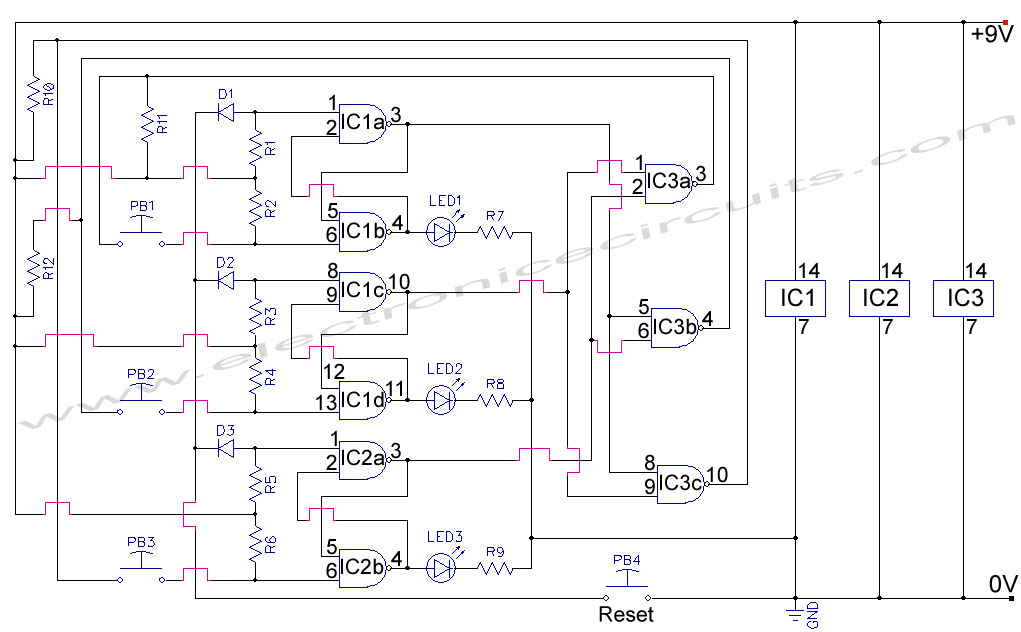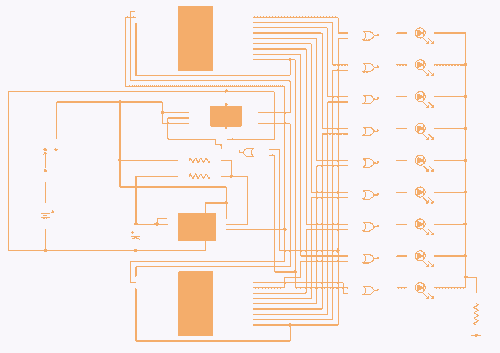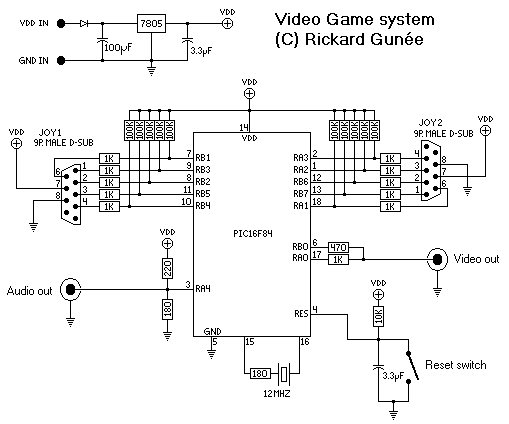
Game Show Indicator Lights (Whos First)

Game Show Indicator Lights (Who's First) Circuit The circuit below activates a light corresponding to the first of several buttons pressed in a Who's First game. Three stages are shown, but the circuit can be extended to include additional stages.
The Game Show Indicator Lights circuit is designed to determine and visually indicate which contestant presses their button first in a competitive game setting. The basic configuration consists of multiple input buttons, each connected to a logic circuit that detects the first button pressed.
In the initial stage of the circuit, each button is linked to a resistor-capacitor (RC) network that helps debounce the button press, ensuring that only a clean signal is registered when a button is activated. The outputs from the buttons are fed into a priority encoder or a simple comparator circuit that assesses the signals and determines which button was pressed first.
Once the first button is identified, the logic circuitry activates a corresponding indicator light, which can be implemented using light-emitting diodes (LEDs) or incandescent bulbs. The indicator lights are connected through a transistor switch or a relay, allowing for higher power output to drive the lights without damaging the logic components.
For scalability, the circuit can be expanded to include additional buttons and corresponding indicator lights. This is achieved by cascading additional stages of logic or using multiplexing techniques to manage multiple inputs efficiently. The design can also incorporate features such as a reset button to clear the previous indication and prepare for the next round of play.
Overall, the Game Show Indicator Lights circuit combines logic design with visual output to create an engaging and interactive experience for participants, making it suitable for various game show formats and competitive events.Game Show Indicator Lights (Who`s First) Circuit The circuit below turns on a light corresponding to the first of several buttons pressed in a Who`s First game. Three stages are shown but the circuit can be extended to include a.. 🔗 External reference
The Game Show Indicator Lights circuit is designed to determine and visually indicate which contestant presses their button first in a competitive game setting. The basic configuration consists of multiple input buttons, each connected to a logic circuit that detects the first button pressed.
In the initial stage of the circuit, each button is linked to a resistor-capacitor (RC) network that helps debounce the button press, ensuring that only a clean signal is registered when a button is activated. The outputs from the buttons are fed into a priority encoder or a simple comparator circuit that assesses the signals and determines which button was pressed first.
Once the first button is identified, the logic circuitry activates a corresponding indicator light, which can be implemented using light-emitting diodes (LEDs) or incandescent bulbs. The indicator lights are connected through a transistor switch or a relay, allowing for higher power output to drive the lights without damaging the logic components.
For scalability, the circuit can be expanded to include additional buttons and corresponding indicator lights. This is achieved by cascading additional stages of logic or using multiplexing techniques to manage multiple inputs efficiently. The design can also incorporate features such as a reset button to clear the previous indication and prepare for the next round of play.
Overall, the Game Show Indicator Lights circuit combines logic design with visual output to create an engaging and interactive experience for participants, making it suitable for various game show formats and competitive events.Game Show Indicator Lights (Who`s First) Circuit The circuit below turns on a light corresponding to the first of several buttons pressed in a Who`s First game. Three stages are shown but the circuit can be extended to include a.. 🔗 External reference





